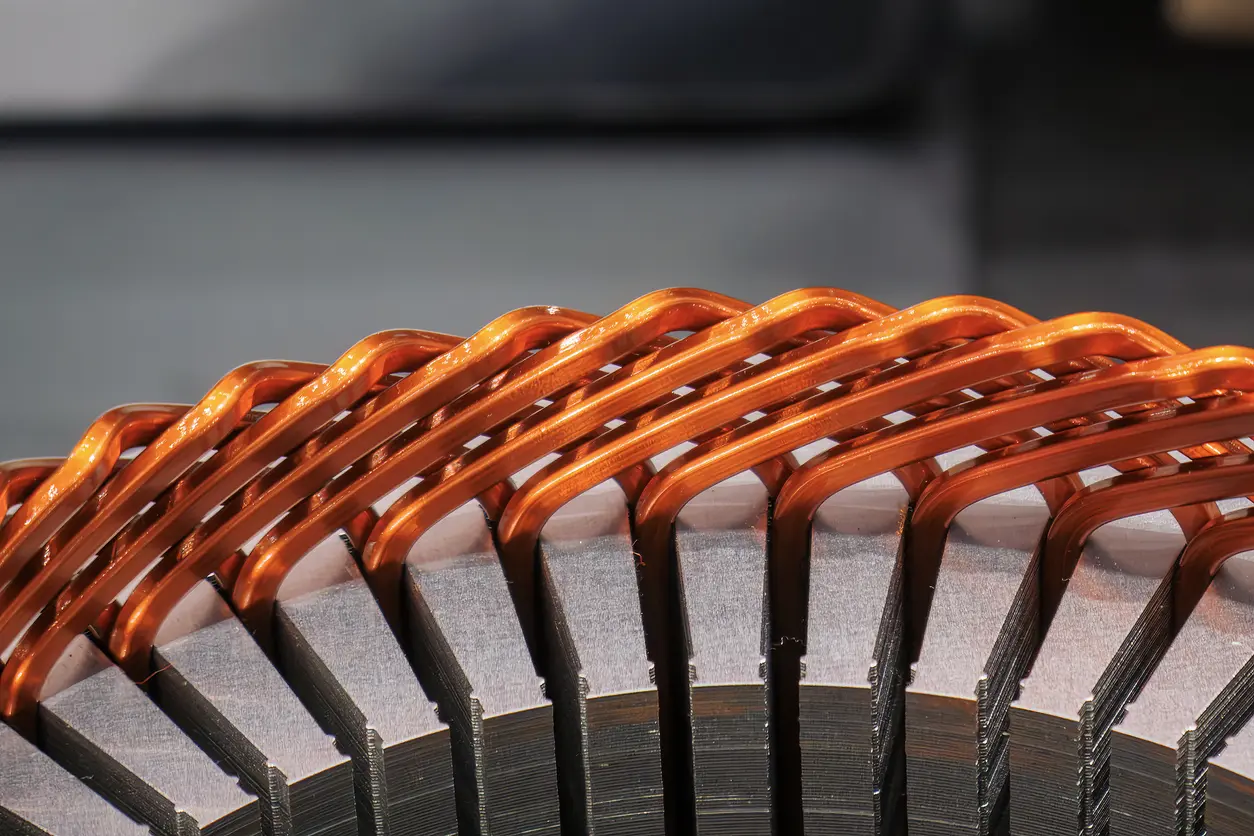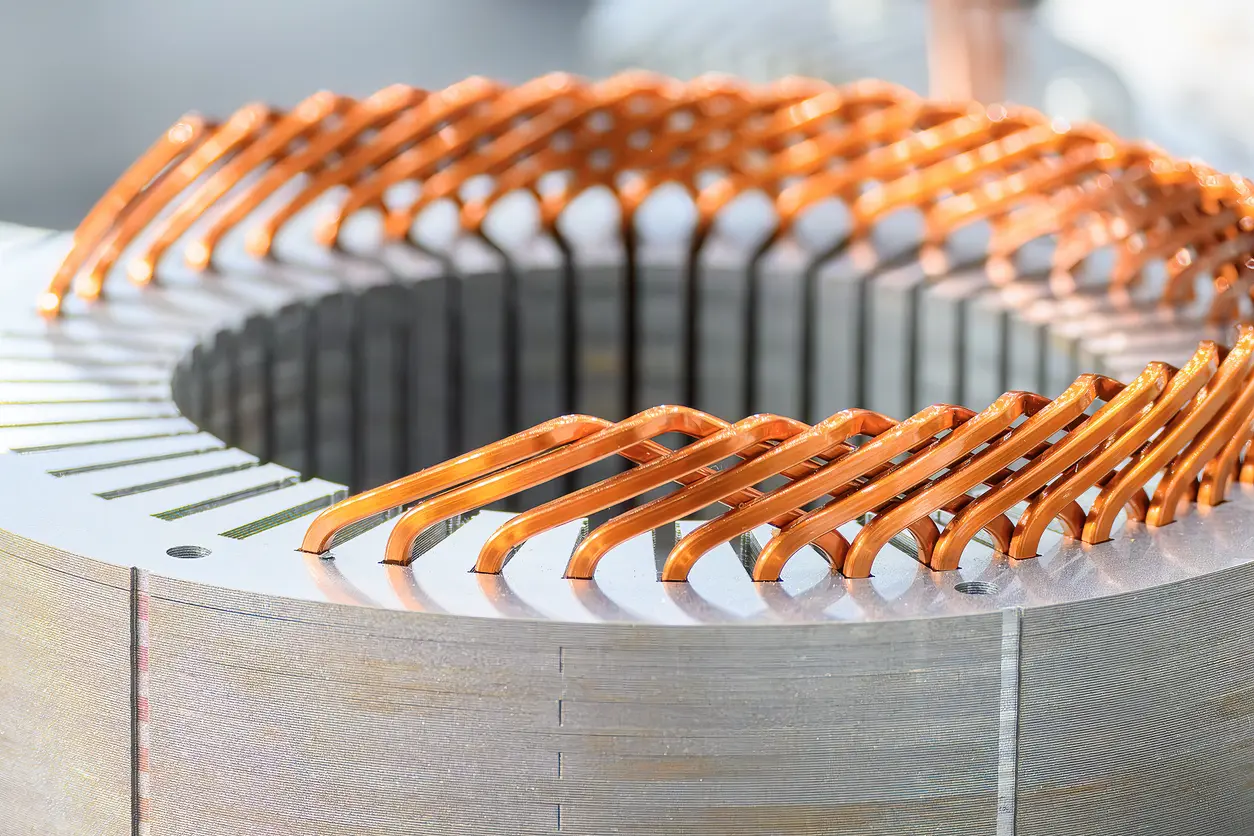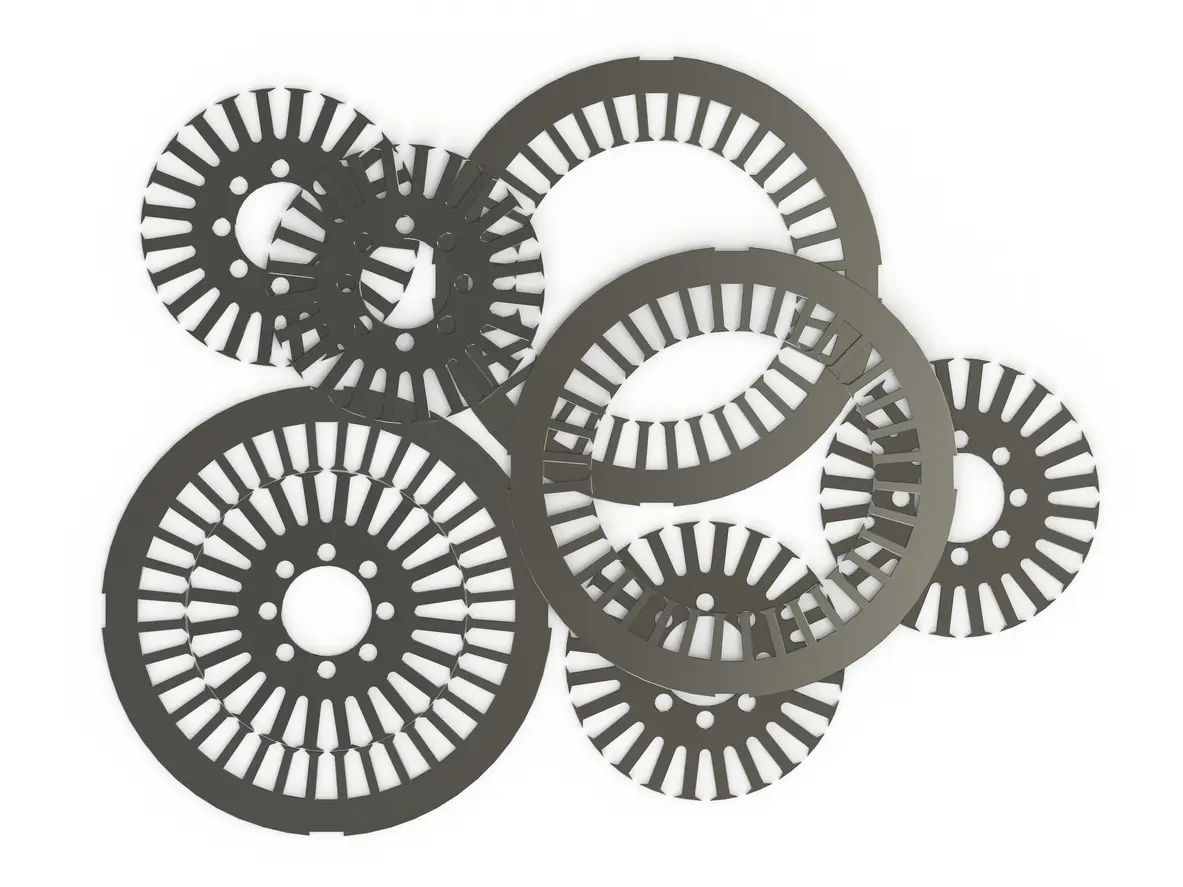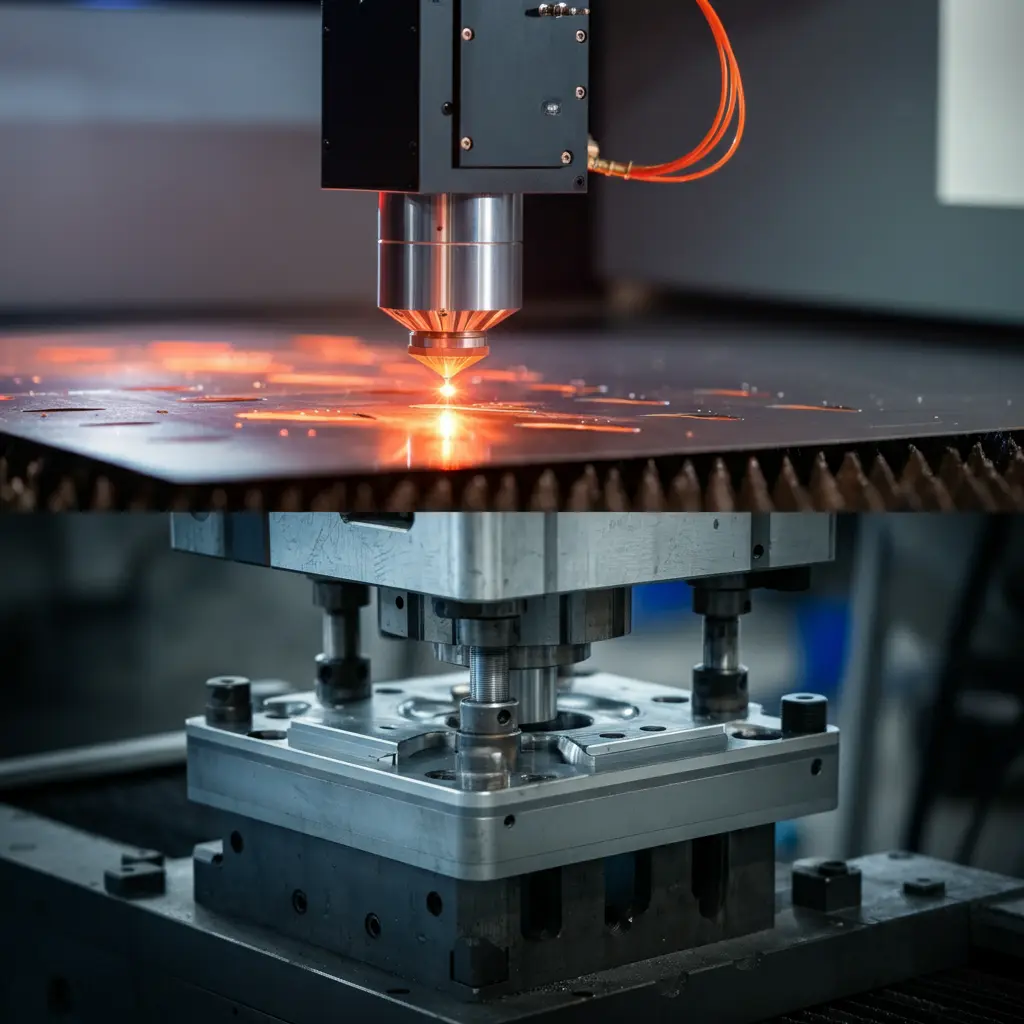1. Introduction to Induction Motor Cores
1.1 What is an Induction Motor Core?
The Induction Motor Core lies at the heart of every induction motor, providing the pathway for magnetic flux to flow and facilitate energy conversion. Typically composed of stacked laminations made from high-grade electrical steel, this core enables the motor’s electromagnetic field to rotate efficiently. While the design may seem straightforward, the core’s structure and material composition play an instrumental role in determining how effectively an induction motor can deliver mechanical power. By reducing eddy currents and ensuring minimal magnetic losses, the proper lamination layout can lead to enhanced performance and longer operational life.
1.2 Why High-Quality Core Assembly Matters
High-quality Induction Motor Core assembly is critical in maintaining optimal motor performance, especially in demanding industrial environments. If the laminations within the core are misaligned or inconsistently bonded, inefficiencies such as excessive heat, vibration, and noise can arise. Moreover, subpar core construction could lead to a premature decline in motor output or even unexpected failures. Conversely, when care is taken with materials and assembly precision, the induction motor runs smoothly with less energy wasted, ultimately improving its reliability and longevity. This attention to detail not only benefits end-users by lowering maintenance costs but also aligns with today’s focus on energy conservation and sustainable operation.
1.3 Overview of the 3 Incredible Secrets
To achieve a robust and efficient Induction Motor Core, it is essential to look beyond basic assembly practices. In the following sections, we will explore three core aspects—material selection and stack design, advanced manufacturing techniques, and rigorous testing protocols—that collectively ensure a reliable and high-performing induction motor. Each “secret” delves into specific considerations and best practices, offering a deeper understanding of how to optimize core integrity. By implementing these approaches in a measured and thoughtful manner, manufacturers and end-users alike can gain a solid foundation for achieving consistent, high-quality results in induction motor operations.

2. Secret #1: Material Selection and Stack Design
2.1 Choosing the Right Core Materials
One of the foundational elements of a reliable Induction Motor Core is the choice of high-quality electrical steel. Typically, silicon steel or non-oriented electrical steel is selected because of its favorable magnetic properties. These materials help minimize core losses and improve overall energy efficiency. However, it is important to note that different steel grades may come with varying cost implications and performance trade-offs. In industrial settings where cost and durability must be balanced, a modest increase in material quality can significantly extend motor lifespan and reduce total operating expenses in the long run.
2.2 Lamination Thickness and Stamping Quality
Lamination thickness is another factor that has a direct impact on how an Induction Motor Core performs under various load conditions. Thinner laminations tend to reduce eddy current losses, contributing to improved efficiency. Still, going too thin can sometimes lead to manufacturing challenges, such as increased fragility or higher production costs. Therefore, selecting the most suitable thickness is a measured decision that aims to strike a balance between performance gains and manufacturability. Precision stamping or laser cutting of laminations ensures consistency in shape and minimal burrs. Any deviation in lamination dimensions may cause misalignment and disrupt the magnetic flux path, undercutting the motor’s overall effectiveness.
2.3 Ensuring Optimal Core Stack Geometry
Once the ideal materials and lamination thickness have been determined, attention turns to the stack arrangement. Evenly stacked laminations form the backbone of a stable Induction Motor Core, helping maintain a uniform magnetic field. Proper alignment techniques, whether manual or automated, help minimize air gaps and other distortions. This is especially critical for large-scale industrial motors, where even slight irregularities can multiply into performance concerns. By focusing on both the selection of optimal materials and the meticulous design of the lamination stack, manufacturers can lay a dependable groundwork for efficient, long-lasting induction motors.
3. Secret #2: Advanced Manufacturing and Assembly Techniques
3.1 The Importance of Automated Stacking Systems
Automated stacking systems have emerged as a valuable solution for achieving uniform lamination alignment in an Induction Motor Core. Compared to manual stacking, automated systems reduce the likelihood of human error, ensuring greater precision in layer placement. This consistency contributes to a more seamless magnetic flux path, ultimately enhancing motor efficiency and reliability. Automated stacking can also speed up production cycles while maintaining a controlled stack pressure, which is crucial for avoiding gaps and uneven lamination contact. Although integrating these systems involves upfront investment, many manufacturers find that improved consistency and reduced material waste justify the cost in the long term.
3.2 Welding, Bonding, and Riveting Methods
Securing laminations together is a delicate process that demands both strength and minimal disruption to magnetic properties. Commonly, welding, bonding, or riveting methods are employed to lock lamination stacks in place for an Induction Motor Core. Welding provides a robust bond, but heat application must be carefully managed to prevent distortion. Bonding with specialized adhesives can reduce stress points, though proper curing times and conditions are important to achieve a durable hold. Meanwhile, riveting—traditionally associated with high-volume production—allows for a dependable mechanical lock between layers. Selecting the most appropriate technique often hinges on operational demands, cost considerations, and assembly line capabilities.
3.3 Utilizing Quality Control Checkpoints
Even the most advanced processes benefit from regular quality inspections. Introducing checkpoints at various stages of assembly—such as verifying lamination alignment, ensuring consistent lamination thickness, and monitoring weld or adhesive integrity—can help detect issues before they escalate. In the context of an Induction Motor Core, thorough checks may include non-destructive tests to identify microcracks or burrs that could impair performance. Once such measures are embedded into the manufacturing workflow, they become vital for maintaining consistent standards. Over time, quality control data can also guide process refinements, ultimately leading to more dependable and efficient motors.
4. Secret #3: Rigorous Testing and Validation
4.1 Electrical Performance Testing
Evaluating the electrical characteristics of an Induction Motor Core is an integral part of confirming its overall quality. Core loss testing measures how much energy is dissipated as heat, indicating whether the magnetic circuit is functioning efficiently. Another common assessment involves checking insulation resistance to ensure the lamination stack is free of defects that could cause current leakage. Moreover, flux density measurements help verify that the core can handle the intended load without saturating. While these methods might appear exhaustive, they collectively provide a reliable indication of whether the motor core will perform as expected under normal operating conditions.
4.2 Mechanical and Thermal Stress Analysis
Even a well-assembled Induction Motor Core can face mechanical stress if the system encounters fluctuating loads or high-speed rotations. Conducting vibration and mechanical stability tests helps identify potential weak points that may cause misalignment or fatigue over time. In parallel, thermal stress evaluations are critical for spotting issues such as overheating. Advanced simulation tools and temperature monitoring instruments are often employed to simulate real-world operating conditions. These measures help ensure that the motor core can dissipate heat effectively and maintain its structural integrity, thereby reducing the risk of unexpected downtimes or failures.

4.3 Long-Term Reliability Studies
Beyond immediate performance checks, long-term reliability studies offer insights into how an Induction Motor Core behaves over extended usage. Techniques such as accelerated aging tests and controlled environmental evaluations can reveal latent issues related to material fatigue or lamination deterioration. During these assessments, engineers track signs of performance degradation, insulation breakdown, or other anomalies. By collecting and analyzing such data, manufacturers can fine-tune their designs and processes to enhance the durability of future core assemblies. Overall, a rigorous focus on testing and validation—covering everything from electrical metrics to thermal endurance—paves the way for a more dependable and resilient induction motor in a wide range of applications.
5. Real-World Applications and Benefits
5.1 Industries Benefiting from High-Quality Induction Motor Cores
A well-constructed Induction Motor Core finds substantial use across a variety of sectors, each requiring efficient, reliable performance under different operating conditions. In automotive manufacturing, for example, induction motors are increasingly being integrated into electric and hybrid vehicles due to their robust nature and ease of maintenance. Meanwhile, the HVAC industry relies on these motors for air handlers, chillers, and compressors, all of which demand consistent torque and minimal downtime.
Industries such as oil and gas, chemical processing, and food production also value the durability of high-grade cores, as these settings often involve extreme temperatures or continuous operation. In many instances, an optimized motor design translates into safer and more predictable workflows, underscoring why selecting a stable and precisely assembled Induction Motor Core is seen as an investment rather than an expense.
5.2 Cost-Efficiency and Operational Advantages
Beyond versatility, a carefully engineered Induction Motor Core can deliver significant cost benefits. For one, reducing core losses lowers the energy required to run motors, translating into noticeable savings on electricity bills. This efficiency becomes especially valuable in large-scale industrial facilities, where multiple motors may operate around the clock. Additionally, motors with stronger, more precise lamination stacks often experience fewer mechanical failures, cutting down on both repair needs and the risk of unplanned outages.
In areas like manufacturing and power generation, the ability to maintain continuous production without disruptive breakdowns can have a marked impact on a company’s bottom line. From a broader perspective, improvements in motor design and assembly align well with sustainability goals, as reduced energy consumption typically means a smaller carbon footprint. Ultimately, investing in a reliable Induction Motor Core is a strategic move that can offer a blend of economic and operational rewards over the motor’s full service life.
Further Reading About Core Loss:
https://onlinelibrary.wiley.com/doi/10.1155/2020/7613737





